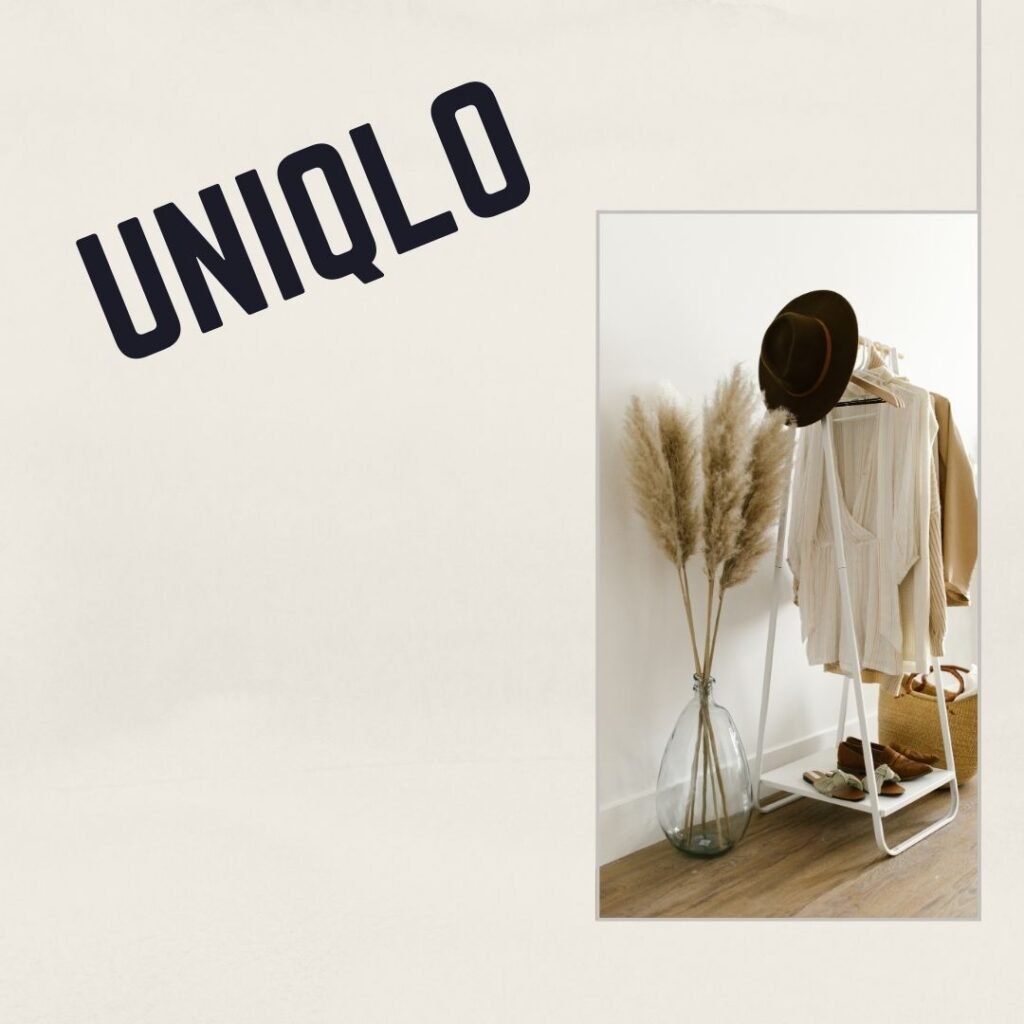The difference between shivering through a night market in Seoul and strolling it like the star of a slow-motion travel reel often comes down to a single, invisible layer. Uniqlo’s HeatTech range—first launched in 2003 and now in its third decade—has rewritten the rules of winter dressing by making insulation nearly weightless. In 2025, where climate zones can flip from subtropical humidity to sudden cold snaps within a single trip, the real fashion flex is not owning the puffiest parka but knowing how to deploy HeatTech so deftly that your silhouette stays sharp on camera while your core stays warm. This article unpacks the science behind those whisper-thin fibers, maps out a climate-by-climate uniqlo layering blueprint, and shares care hacks that keep each piece performing season after season.
Table of Contents
HeatTech 101: The Science Inside the Stitch
At first glance, a standard HeatTech crewneck looks no more high-tech than an ordinary cotton tee, yet its fibers are engineered for heat generation rather than simple retention. Every strand is spun with ultra-fine acrylic that absorbs the body’s moisture, triggering an exothermic reaction that creates warmth while hollow micro-pockets trap air to insulate it. Meanwhile, embedded rayon wicks away excess humidity, a nylon weave grants two-way stretch, and a dash of polyurethane stops the fabric from sagging from daily wear. The result is a base layer less than one millimeter thick yet capable of boosting skin temperature by up to 4 °C, according to internal lab tests cited in Uniqlo’s 2024 product briefing. Additives such as zinc ions quell odor, and a plant-oil finish gives the latest generation a surprisingly silky hand feel. For travelers, that means you can pack three tees in the space once occupied by a single fleece without sacrificing warmth—or luggage allowance.
Picking Your HeatTech Grade: Regular, Extra Warm, or Ultra Warm?
Not all HeatTech is created equal, and grabbing whichever tee is on display can leave you overheated in Dubai or under-dressed on a ski lift in Whistler. Uniqlo divides the lineup into three thermal grades: HeatTech (daily use down to roughly 10 °C), HeatTech Extra Warm (rated to about 0 °C), and HeatTech Ultra Warm (built for –10 °C and below). The fabric density increases incrementally—Standard clocks in at 155 g/m², Extra Warm at 190 g/m², and Ultra Warm at a lofty 220 g/m²—yet even the bulkiest version is thinner than a traditional waffle thermal. A 2024 refresh also introduced a Cashmere-Blend Extra Warm option for wearers who want a luxury hand feel without the environmental toll of full-fiber cashmere. Whether you are a commuter blasting through icy subway tunnels or a snowboarder clocking dawn patrol hours, picking the right grade is the first domino in a fail-proof layering system.
The Layering Framework: From Static to Cinematic
1. The Tropical-Winter Tactic (15 °C and Humid)
Cities like Karachi, Bangkok, or Miami experience “winters” that are more about sudden wind chill than true cold. Here, a standard HeatTech T-shirt beneath a loose Oxford or rayon uniqlo camp-collar shirt does double duty: it prevents cold sweat during post-rainfall breezes. It keeps your outer layer looking crisp on video by eliminating underarm damp patches. Swap chinos for Ultra-Stretch DRY-EX pants to stay camera-ready when humidity spikes at midday.
2. The Temperate-Zone Shuffle (0–10 °C Swings)
London, Tokyo, or Melbourne can slide from drizzle to sunshine in an afternoon. Arm yourself with a HeatTech Extra Warm mock neck tucked into wide-cut jeans; top it with a uniqlo lightweight BlockTech trench that repels rain while allowing vapor escape. On-screen, the mock neck frames the face like a cinematic close-up shot, while the trench’s clean drape reads “leading character” rather than “tourist layering disaster.”
3. The Continental Cold-Snap (–5 °C and Windy)
Berlin, Toronto, or Seoul winters punish any exposed inch. This is Ultra Warm territory: start with the crewneck, add a flannel-lined overshirt for texture, then seal everything under a seam-sealed PuffTech parka. Because Ultra Warm’s brushed interior already traps air, you can choose uniqlo slimmer trousers to avoid Michelin-Man proportions—ideal for city footage where bulk equals bad framing.
4. The Alpine Method (–15 °C and Dry)
Back-country skiers and photographers chasing auroras in Iceland know that static cold is easier to manage than damp chill—until you stop moving. Pair a HeatTech Ultra Warm long-sleeve with the hybrid-insulation JWA collaboration puffer; its solar-reflect coating bounces infrared rays, giving you extra minutes before battery-draining conditions hit your camera gear. Finish with HEATTECH tights beneath shell uniqlo pants so you can crouch, climb, or lie prone for that perfect time-lapse without losing blood flow to your toes.

Climate Case Studies: Real-World Layering Wins
Karachi Nights (12 °C, sea breeze): A user who swapped bulky wool sweaters for a HeatTech tee + Supima cotton hoodie combo reported shedding half a kilo of nightly uniqlo laundry weight while still feeling cozy during midnight chai runs.
London Commutes (4–9 °C, drizzle): Replacing Merino with Extra Warm mock necks cut backpack volume by 30 % for a Westminster graphic designer who bikes to uniqlo work, letting him stash a DSLR for impromptu shoots.
Toronto Blizzards (–18 °C, lake effect): A photographer shooting the Distillery District’s light festival layered Ultra Warm under a down parka and stayed on location for four hours straight, uniqlo citing the tee’s moisture control as the reason his lenses stayed fog-free.
Melbourne Spring (8–22 °C swing): A filmmaker toggled between indoor edit bays and windy rooftop sets by pairing standard HeatTech with an unlined twill jacket, ditching heavy uniqlo scarves, and keeping continuity in wardrobe across scenes.
Care, Longevity, and Circular Fashion
HeatTech isn’t invincible; ignore the wash label, and you’ll ruin its loft faster than a fogged lens kills a sunset shot. Wash inside-out in cold water, skip fabric softener (it clogs the micro-pockets), and line-dry away from direct sun to protect the plant-oil finish that gives the latest editions their silky feel. Uniqlo’s 2025 sustainability report notes that 30 % of the polyester used in core HeatTech SKUs is now recycled, with a target of 50 % by 2027, and every store—Karachi’s Dolmen Mall included—runs a garment-recycling program that funnels worn pieces into insulation for disaster-relief tents. In practical terms, that means your fifth-year Extra Warm crew can live a second life as lifesaving fill rather than landfill fluff, letting you refresh your capsule wardrobe guilt-free.
Conclusion: The Cinematic Payoff
When you master HeatTech layering, the benefits ripple far beyond body temperature. Clothes drape better because you need fewer of them; video footage looks sleeker because silhouettes stay streamlined; luggage feels lighter, freeing you to add an extra prime lens or a souvenir vinyl. In an era where every alleyway and alpine ridge can double as a film set, Uniqlo’s thermal tech is the secret rigging that lets everyday people step into the frame looking composed, whatever the forecast throws their way.
FAQs
1. How often should I replace my HeatTech pieces?
With proper care—cold-water wash, air-dry, and no fabric softener—standard and Extra Warm items hold their loft for roughly 50 wash cycles or three to four winter seasons of heavy rotation. Ultra Warm retains performance for about 40 cycles due to its denser nap.
2. Can I wear HeatTech in tropical climates without overheating?
Yes. The moisture-wicking rayon keeps skin dry, and the fabric’s breathability prevents the stifling sensation common to old-school thermals. Opt for the regular grade and stick to light outer layers.
3. Does HeatTech lose its warming ability if it gets soaked in rain?
Unlike down, HeatTech fibers continue generating heat when damp because their warmth comes from moisture absorption. However, you’ll feel clammy; pair with a water-repellent shell to stay comfortable.
4. Are there any eco-friendly HeatTech options?
Uniqlo’s 2025 line incorporates at least 30 % recycled polyester, with certain Cashmere-Blend items using responsibly sourced fibers. Recycling drop-boxes in most stores gives worn pieces a second life.
5. How do I choose between a mock neck and a crewneck HeatTech?
Mock necks add visible polish and trap more warm air around the neck—a boon in windy cities—while crewnecks disappear under shirts, ideal for layered office outfits or for people who dislike fabric touching the throat.

